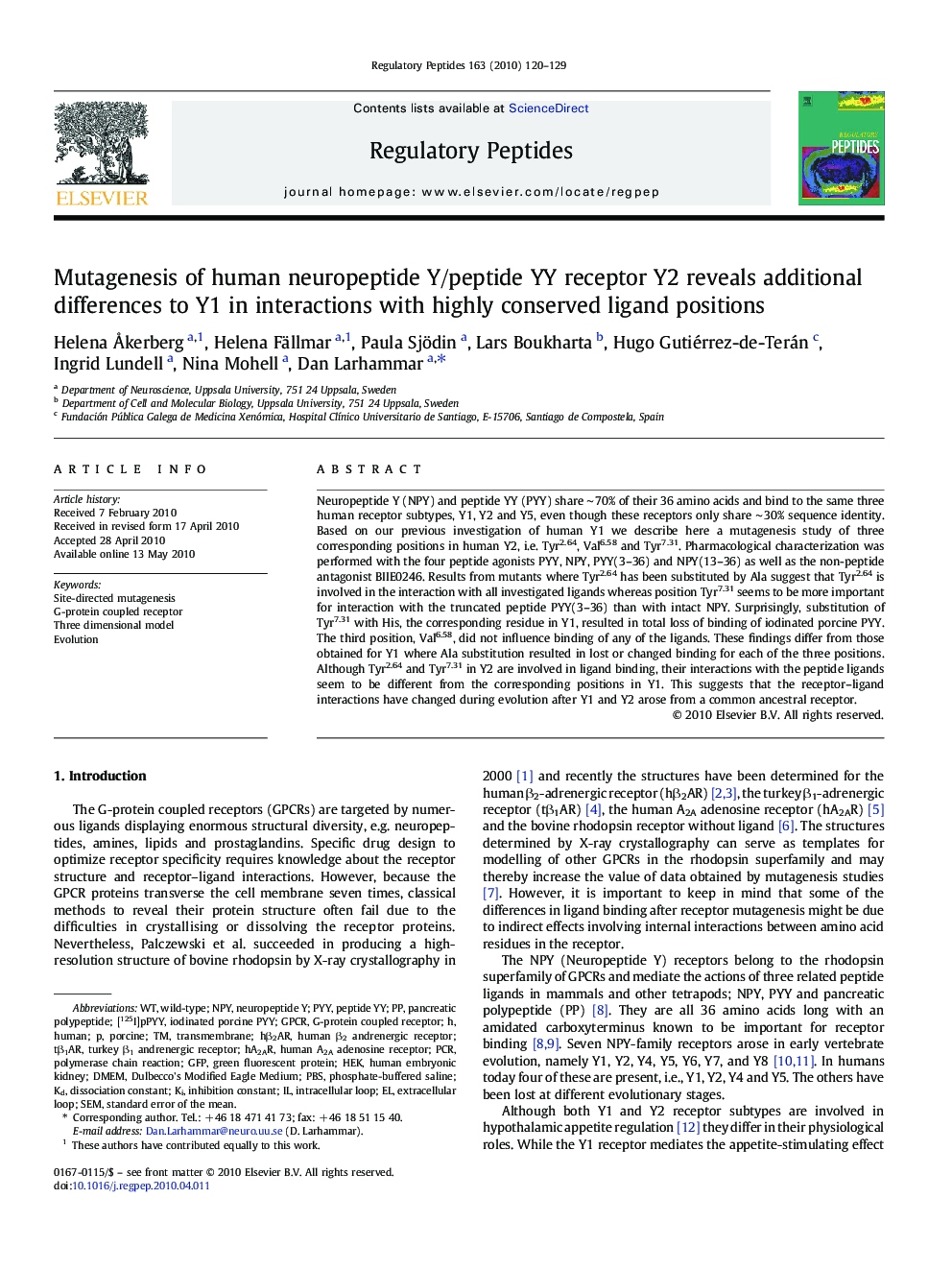| Article ID | Journal | Published Year | Pages | File Type |
|---|---|---|---|---|
| 2022804 | Regulatory Peptides | 2010 | 10 Pages |
Neuropeptide Y (NPY) and peptide YY (PYY) share ∼ 70% of their 36 amino acids and bind to the same three human receptor subtypes, Y1, Y2 and Y5, even though these receptors only share ∼ 30% sequence identity. Based on our previous investigation of human Y1 we describe here a mutagenesis study of three corresponding positions in human Y2, i.e. Tyr2.64, Val6.58 and Tyr7.31. Pharmacological characterization was performed with the four peptide agonists PYY, NPY, PYY(3–36) and NPY(13–36) as well as the non-peptide antagonist BIIE0246. Results from mutants where Tyr2.64 has been substituted by Ala suggest that Tyr2.64 is involved in the interaction with all investigated ligands whereas position Tyr7.31 seems to be more important for interaction with the truncated peptide PYY(3–36) than with intact NPY. Surprisingly, substitution of Tyr7.31 with His, the corresponding residue in Y1, resulted in total loss of binding of iodinated porcine PYY. The third position, Val6.58, did not influence binding of any of the ligands. These findings differ from those obtained for Y1 where Ala substitution resulted in lost or changed binding for each of the three positions. Although Tyr2.64 and Tyr7.31 in Y2 are involved in ligand binding, their interactions with the peptide ligands seem to be different from the corresponding positions in Y1. This suggests that the receptor–ligand interactions have changed during evolution after Y1 and Y2 arose from a common ancestral receptor.
